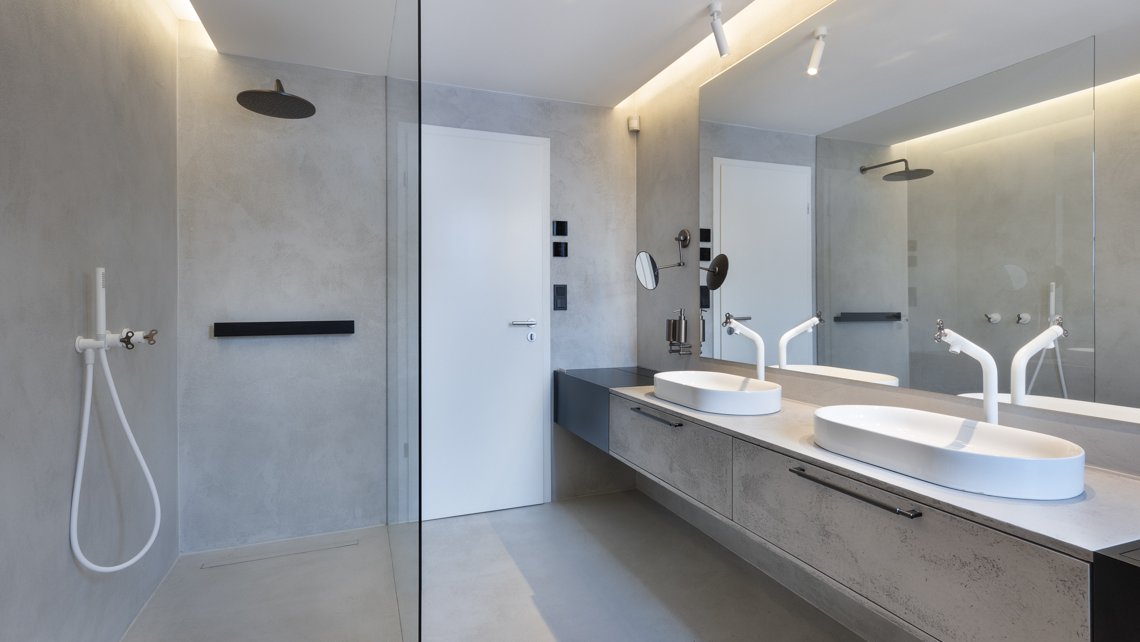Blog
How to Avoid Issues with Polished Plasters in Shower Enclosures?
First and foremost, it is important to note that there are many polished plasters on the market that offer a concrete look. Just as crucial as choosing a reliable and experienced company is selecting the right material. The composition of the polished plaster plays a key role when looking for a suitable option for use in shower enclosures.
1. Cement-Based Polished Plasters: Beautiful but Unsuitable for Humid Environments
Many “concrete-look” polished plasters available on the market contain cement and are protected from water only by a thin layer of sealant. However, these materials are not designed for high-humidity environments. While they may appear aesthetically pleasing at first, problems often begin to surface after a short period.
Cement-based materials are brittle and prone to cracking. Once microcracks appear, water can easily seep beneath the surface, leading to unsightly stains, blistering, or even peeling layers. Moreover, trapped moisture in these areas can pose health risks by encouraging mold growth.
2. Key Risk: Joints and Sealants
A common weak point in bathrooms with cement-based polished plasters is the connection between walls and floors. Sealants have a limited lifespan, and once they fail, water begins to seep under the surface. This can result in irreversible damage, affecting both the aesthetics and functionality of the bathroom.
3. The Ideal Solution: Epoxy Polished Plasters
For wet areas, it is essential to choose epoxy-based polished plasters. These materials do not absorb water, and their sealant is used solely to enhance cleanability rather than to protect the surface from moisture.
Epoxy polished plasters also have the ability to perfectly conform to the shape of the surface they are applied to, making them ideal for use on unconventional surfaces such as curved walls or other irregular shapes. This makes them a versatile solution for any space where functionality and durability are a priority.
4. Invest in Quality and Expertise
Choosing the wrong material or an unprofessional installation can lead to costly bathroom repairs. That’s why it is essential to work with experts who have experience in creating durable bathroom surfaces. Němec s.r.o., with over 25 years of expertise, offers its own time-tested and proven technology—epoxy polished plaster Betonepox®, which is ideal for use in high-demand areas, including bathrooms.
If you are planning a bathroom renovation, we recommend visiting our showroom in Prague or Brno. There, you will not only find inspiration but also receive expert advice to help you choose the right solution for your project.
